Badzine contributor Yves Lacroix brings us an entire alphabet of his memories from the recently concluded Games of the XXX Olympiad in London.
Story and photos: Yves Lacroix
Army – I have to admit that army staff and military propaganda never had any effect on me but hats off to the soldiers who acted as security personnel in London. All the reports you may have read about them are true – they always were very polite and courteous and made the daily security checks much more enjoyable.
Badminton – For those of us from non-Asian countries who wished for more exposure for our sport, our wish was granted! It might have been for all the wrong reasons – the much mediatized and talked about disqualification in women’s doubles and therefore the promotion of the Canadian duo of Bruce-Li – but my badminton friends back in Montréal finally got to see live badminton on TV and, to top it off, on the major broadcasting channel!
Crowd – From Day 1, the crowd was on hand in great numbers. As opposed to other events I’ve seen on TV and in the newspapers, rarely were the spectator seats more than 25% empty even at the end of night sessions. Also, hats off to the crowd for their reaction at the famous women’s doubles non-matches.
Domination – The best word to describe the Chinese gold medal sweep. Not only are the Chinese super-dominant in women’s singles and doubles events but they’re also lucky enough to have at least one outstanding competitor in the other events. Only Lee Chong Wei came close to breaking that stronghold. Shall we prepare ourselves for the same situation in Rio?
Emotion – The Games are always the theatre for some of the most genuine emotion you can witness in sports. One of the most touching moments of the tournament was the pure sorrow and pain on Sayaka Sato’s face when she couldn’t finish her match against Tine Baun due to an injury. Tine is indeed a great dame and the way she reacted to comfort Sato was simply an unforgettable sight.
Fair play – Along with Tine Baun, Juliane Schenk displayed incredible fair play when she lost against Ratchanok at the Round of 16 stage. As Ratchanok was crying with joy, Juliane simply came over and hugged her crying opponent. Class, pure class, that Juliane.
Gade – I first saw Peter play at the 1995 Danish Open. He then lost in the quarters to Dewi Aryanto. Almost 17 years later, I see him once again reach the quarter-final stage at such a prestigious event as the Olympic Games. What words could describe such a long and incredible career? Wow, maybe?
Hurt – The agony of defeat was the expression that came to my mind when I saw Michal Logosz, Sayaka Sato and Wang Xin leave the court on stretchers and wheelchairs. Logosz’s screams sent chills down the spine of all the spectators who witnessed his agony. Sayako Sato’s pain was more emotional than physical but equally touching. Finally, who knows what would have happened if Wang Xin hadn’t been injured in the women’s singles bronze match?
Indonesia – It was a pity to see such a traditional badminton powerhouse as Indonesia leave London without a single medal. I know that the Olympics are not a team event but Indonesian fans are so passionate that they deserved at least one medal!
Jung (Chung) Jae Sung – How fitting it was to see such a talented player end his career with a bronze medal. It would be have very disheartening to see him quit badminton without an Olympic award. No wonder he cried on the podium. I’m sure many of his fans did the same.
Koukal – One of the nicest guys on the circuit finally got the spotlight he deserved as the flag bearer for the Czech Republic at the Opening Ceremony. Petr was one of the three badminton players chosen to be flag bearers in the parade of athletes. Well done, Petr!
Long days – When I first saw the schedule for the badminton tournament at the Games, I almost went into panic mode. 8.30AM -11.00 PM for the first 4 or 5 days, said the schedule. Yikes! Lots of fun but also lots of work ahead, I thought. And indeed it was. Wembley Arena was very warm and when we headed back to our hotel late at night, the air was autumn cold. The change of temperature combined with the lack of sleep was the perfect recipe for a summer cold. As a result, many photographers and TV camera operators got sick and had the sniffles by the end of the tournament. Who said taking pictures was easy?
Music – I’m all for innovation and dynamic marketing for sports but I feel the Olympics give a little bit too much away in terms of decorum and tradition when they play pop songs such as “We will rock you” and “YMCA” during events. Of course, all the songs played are always in English and from the major producer countries of pop music. I hope it will be different in Brazil. I wouldn’t want the Games to revert to the conservatism of Wimbledon but I’m sure there is a middle-ground to be found between the Village People and Wimbledon. Any ideas, anyone?
Not sure… – Hmm, not so sure about the group play format for the Olympic Games. The official reason – to give minor players more exposure – is of course praiseworthy but I feel uncomfortable with changing the rules of a given sport for just one competition. I always found it strange that sports like tennis would change rules from one tournament to the other (tiebreak there, no tiebreak here – three sets here, five sets there – two sets in doubles, three sets in singles, etc) but it’s rather unusual in badminton. At my level of competition (Québec regional), group play is rather common but it’s certainly not the case for world-class badminton. And what about the side effects of such a format that we all witnessed in women’s doubles in London? The group play format really has to be implemented cautiously in order to make it a success.
Opening Ceremony – What would be the Olympic Games without the opening ceremony? Most people focus on the show – and rightfully so – but I have to admit that my favourite moment has always been the parade of the athletes. No other event could be more international. I truly love to see all the countries -in fact; they’re NOCs, not countries – parade in alphabetical order. American Samoa, Liechtenstein, Nauru, Palestine and Timor Leste finally get their chance to parade with the bigger nations. Yes! I just wish there was one more country between Qatar and Romania but that’s a totally different matter.
Photo staff – Sports photographers are subject to rules and restrictions in order to perform their duties and rightfully so. At the London Games, the poor people who had to implement these rules were the photo manager and the photo staff volunteers. What could have easily become a nightmare for the photographers quickly became a pleasant professional relationship between extremely kind volunteers and very cooperative photographers. I had never before seen such a fraternal spirit among photographers. The London 2012 photo staff will definitely remain my fondest memory of the Games.
Queue – One had to be extra patient to buy any London 2012 souvenirs. The longest queues I’ve seen at the Games were neither for the security checks nor for the subway but for the Megastore at the Olympic Park! There was a souvenir shop in the media village but since it didn’t offer much, you had to go to the Megastore to buy interesting souvenirs and memorabilia. If you wanted to get any given t-shirt in a specific size, you had to get to the store early morning or else face the fact that the shelves would already be half-empty as early as noon. Crazy!
Radio – So big was the women’s doubles controversy that I got solicited for live radio interviews by media back home. The same thing happened to my friend and colleague Don Hearn in Korea. Bragging aside, it’s nice to have our knowledge and expertise acknowledged once in a while.
Service – At the Olympics, photographers are entitled to two magnificent service centres located at the Main Press Centre. One is operated by Canon, the other by Nikon. Both offered loans and free repairs. One of my lenses actually died on me during the badminton tournament and how nice it was to be able to have it repaired in super quick fashion.
Transportation – Once again, not quite the nightmare many predicted. Of course, getting from Wembley to the Olympic Village was quite a ride – over an hour – but never troublesome. Even after the Opening Ceremony, it was possible to access the subway in less than 30 minutes. Beijing had a better transportation system for the media and athletes but London could count on a much better public transportation system. As a traditional supporter of the latter, I say ‘cheers’ to the LOCOG!
Umpires – When players are introduced at the beginning of a match, the officials usually get polite but minimal applause. Fair enough, they’re not the superstars of the sport. However, when you get to know them, you quickly discover how passionate they are for our sport. One has to hear the pride in their voices when they learn that they’ve been selected to umpire an important final. They give their time and money just to be there. My respect to all of them!
Ville Lang – It’s true that the Olympics can give some of the players exposure that they would otherwise never get. Such is the case for Ville Lang who played a brilliant match against Lee Chong Wei at the group stage. Players like Ville often don’t have sufficient funding to play on a regular basis at the Superseries level. It’s therefore quite nice to see such players deliver great performances at the few opportunities they get. Thumbs up to that!
Wembley Arena – It was my first experience ever in covering badminton in the UK. Despite all the Olympic makeup, one could feel all the history surrounding the venue which hosted the All England for 37 years. This is where legends like Rudy Hartono and Judy Hashman won their numerous titles. There are not so many badminton meccas but Wembley Arena is definitely one of them.
Xièxiè (谢谢) – Thank you Lin Dan and Lee Chong Wei for giving the badminton community such a great final in the match everybody was obviously waiting for. And when I say everybody, I really mean it. You know a match is the pinnacle of a tournament when even the players’ seats are filled with players who don’t want to miss the spectacle. Seeing Lee Chong Wei lose in such a fashion was indeed heartbreaking for his supporters but I always say it’s the best way to win: you give everything you have and you leave without any regrets. Much better than losing 12–21, 8–21 as in 2008, that’s for sure!
Young talents – It was obviously a bit premature for these Games but there is bound to be a slight change of guard on the Olympic women’s singles podium with the rise of such promising talents as Ratchanok Intanon and Tai Tzu Ying. Japanese diminutive Nozomi Okuhara is another one to watch for. However, competition will be tough if China continues to come up with new talents such as Li Xuerui.
Zhao Yunlei – What a tournament she had! Only one loss in twelve matches and two gold medals at the same Olympics. Well deserved for a very talented and friendly player. 太好了!
0500 – The number of my photographer’s vest and my favourite inside joke of the Games. Thanks to the photo manager Raphael Sachetat for choosing me such an awesome number!
![Memories of…the 2012 London Games from A to Z Badzine contributor Yves Lacroix brings us an entire alphabet of his memories from the recently concluded Games of the XXX Olympiad in London. Story and photos: Yves Lacroix Army – […]](http://www.badzine.net/wp-content/uploads/Newsflash-thumbnail.png)
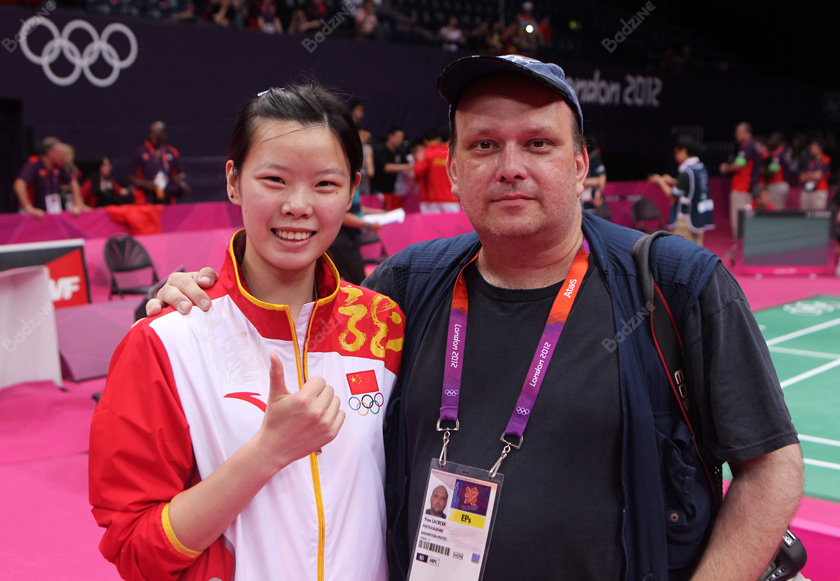
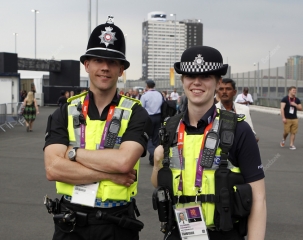
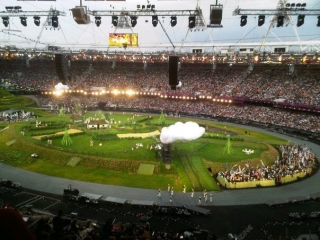

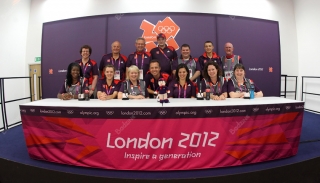
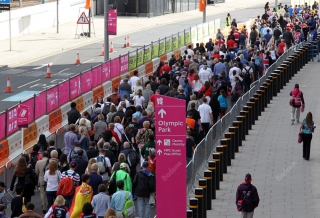
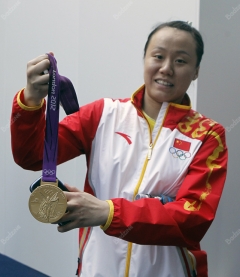

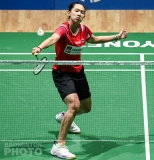
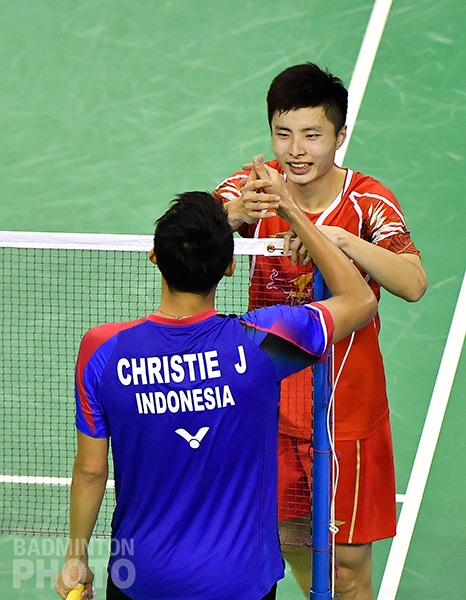
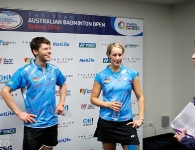
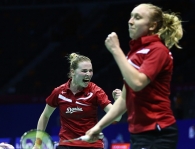
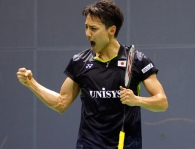
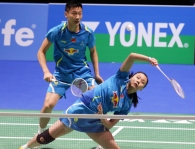
Leave a Reply